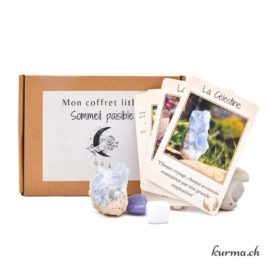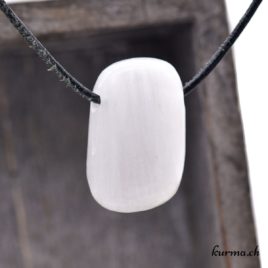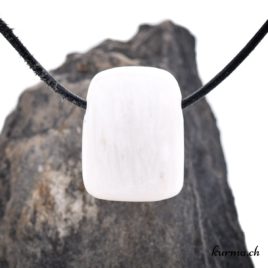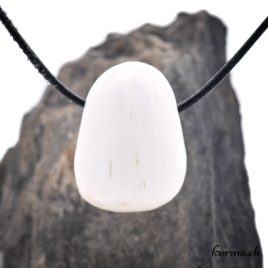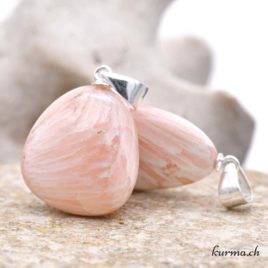The virtues and properties of Scolecite in lithotherapy
Scolecite promotes healthy bonds and constructive and cooperative exchanges between people, helping to drain away anything that disrupts good cohesion and understanding.
His wisdom helps you to understand that within a group, when everyone's strengths are united and everyone's weaknesses accepted, everything takes on meaning and is built under the sign of harmony.
Like the light at the end of a tunnel, it can also help with agoraphobia, panic attacks, depression or irrational fears.
On a physical level, it contributes to drainage and the elimination of toxins and can facilitate slimming diets. It can also help with fatigue, exhaustion, burn-out or lack of light.
How to use a Scolecite
- Perfect as a centerpiece for group work.
- Carry it with you when you have to face a crowd or find yourself in a situation where there's likely to be conflict.
- To promote sleep, spend 10 to 20 minutes each evening relaxing and breathing deeply with a Scolecite placed on your forehead or heart.
Where to place a Scolecite?
- A Scolecite in a living space diffuses luminous and purifying energies. For optimum diffusion, it is best chosen in the form of crystal clusters.
- In the bedroom or in a place dedicated to relaxation.
- In a workroom, group office or meeting room.
- On the dining room table.
How to purify a Scolecite?
Moon/sun, waveform, fumigation, singing bowl, breath/wind, prayers...Chakras
6ᵉ and 7ᵉ Chakras - 3ᵉ eye and CrownAstrological sign
CapricornElement
EtherScolecite in mineralogy
A member of the Zeolite family, Scolecite forms long prismatic crystals up to 30cm long, or aggregates of fine fibrous rods. It is a and silicate containing traces of iron, potassium and sodium.
It may be hydrothermal or metamorphic.
Its luster is vitreous and silky and its color is white to colorless, sometimes with slight salmon, gray or pinkish highlights.
Scolecite deposits are found mainly in Russia, India, the Faroe Islands, Iceland, the USA, Brazil, France, Slovakia and Austria.
The history of Scolecite
Did you know that? Its name, officially given in 1816, comes from the Greek scolex, meaning worm, because this mineral twists like a worm when placed under high heat.
Zeolite powder has been used for over a century, particularly in Russia, to cleanse the body of heavy metals and other potentially harmful molecules, especially after chemotherapy or long medical treatment.
It was also used as a radioactive decontaminant at the Chernobyl and Fukushima sites.
Lithotherapy
- Element(s) :
- Zodiac(s) :
- Capricorn
- Purification :
- Singing bowl, Fumigation, Moon, Form waves, Sun, Breath
- Caution(s):
- No water
- Physics :
- Digestive system, Detox, Fatigue, Immune system
- Emotional :
- Anxiety, Clarity, Hypersensitivity, Nervousness, Fear, Stress, Balance
- Spiritual :
- Harmony, Subtle worlds (connection), Purification, Spirituality
- Disorder(s):
- Agoraphobia, Burn-out, Depression
- Miscellaneous :
- Relationship (friendship), Relationship (family)
Mineralogy
- Hardness :
- 5.0-5.5
- Moths scale:
- 5
- Strunz classification :
- Silicate
- Crystalline system :
- Monoclinic
- Chemical element :
- Ca, Al, Si, O, H, Fe, K, Na
- Line color :
- White
- Density :
- 2.25-2.40
- Cleavage :
- Good
- Fracture:
- Conchoidal
- Transparency :
- Transparent to translucent
- Refringence :
- a=1.507-1.513, b=1.516-1.52, g=1.517-1.521
- Birefringence :
- Biaxial (-); 0.0080-0.0100, 2V = 36 to 56°.
- Fluorescence :
- Yes; yellow to yellowish
- Colors :
- White to colorless, sometimes with slight salmon, gray or pinkish highlights
- Magnetism :
- no
- Radioactivity :
- no
Other stones that promote cohesion and harmony
*Please note! Some minerals may be toxic and must not be licked or ingested (as such or in the form of powder, elixir or stone water) or be in prolonged contact with the skin or mucous membranes.
*The information on the stones described here are general indications based on our research and experience, and are not exhaustive.
Reproduction in whole or in part of this content is prohibited. More info

